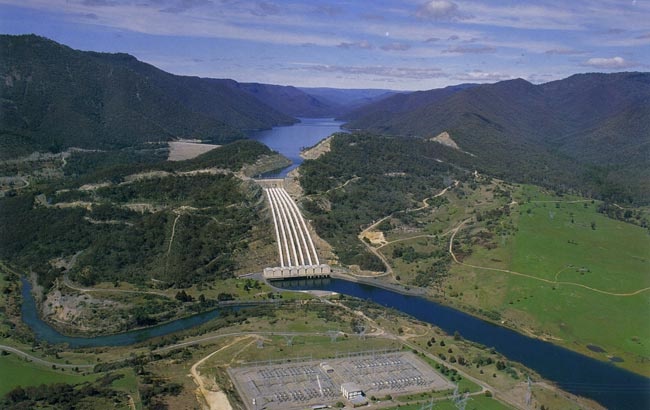Preamble
The Australian Computer Society was formed 50 years ago, when the various state computer societies joined forces.
To mark the occasion, the ACS has initiated a heritage project to honour the many individuals who have contributed to the growth of the ICT profession in Australia.
At the heart of the project is a history of computing in Australia. It is not just a history of the ACS, but the history of a profession.
Australia has the longest computing history of any country, excepting the US and the UK, and CSIRAC in the Museum of Victoria is the oldest computer still in existence.
Previously published:
Chapter 1 -The start of Australia’s computing history
Chapter 2: The first Australian Computer Conference
Chapter 3: Harry Messel and the birth of SILLIAC
Chapter 5: SILLIAC and the Snowy Mountains Scheme
The fact that it took almost seven years after the birth of Trevor Pearcey’s CSIR Mark 1 for another computer to appear in Australia indicates just how far ahead of his time Trevor Pearcey was. In the years between CSIR Mark 1 in 1949 and the spate of new Australian machines in 1956 – including the University of Sydney’s SILLIAC – the theory and practice of electronic computing had grown substantially.
Computers were still being designed and built from scratch, and they were still being given individual names, but increasingly the growing demand for ‘electronic brains’ was being met by companies producing standardised general purpose computers for academia, government and commercial use.
SILLIAC was in demand even before it was switched on. The Snowy Mountains Hydro-Electric Authority (SMHA) was the largest external user of the CSIR Mark 1 and was keen to get time on a more powerful computer. Formed in 1949 to construct and manage the massive civil engineering program that was the Snowy Mountains Scheme, the SMHA had the need for large amounts of computation for such things as tunnel diameter optimisation, dam wall modelling, and water and electricity flows.
In March 1956, shortly after he arrived in Australia, the SMHA invited John Bennett to its Cooma headquarters to discuss the SMHA’s computing requirements and the extent to which SILLIAC might be able to meet them. The SMHA’s applications were very data-intensive, and Bennett recommended magnetic tape for SILLIAC as a high priority.
The problem was that there was no such storage commercially available, and the construction of SILLIAC had already gone significantly over budget.
SILLIAC ran its first successful ‘Leapfrog’ testing program on 4 July 1956, featured at the University’s open day on 22 July, and was formally inaugurated on 12 September. Just one day earlier the NSW University of Technology unveiled its first computer called UTECOM (University of TEchnology COMputer). But SILLIAC was the first of them to be operational.
The official launch of SILLIAC
SILLIAC’s launch was a significant event, attended by the Administrator of Australia (acting Governor-General) Sir John Northcott, the University’s Chancellor and Vice Chancellor, and the man who had made it all happen with his donation of £50,000, Adolph Basser, who spoke at the launch.
“I helped bring SILLIAC into the world,” he said. “I have every intention of seeing that it is well reared.” With that he announced a donation of an extra £50,000, half to cover the extent by which SILLIAC had exceeded its budgeted cost, and half to cover the cost of developing and installing magnetic tape storage for the machine – money which Harry Messel and John Bennett had been desperately seeking from other sources to improve its data storage capabilities to meet the SMHA’s requirements. They had not dared ask Basser for more money.
When Sir John Northcott flicked the white switch that officially turned SILLIAC on, it replied with a printout:
THANK YOU, YOUR EXCELLENCY FOR DEDICATING ME TODAY.
AND THANK YOU, DR. BASSER, FOR MAKING ME POSSIBLE – SILLIAC.
The opening ceremony handouts included a list of the sorts of jobs SILLIAC was capable of: nuclear physics, low-temperature analysis, cosmic ray shower analysis (its original justification), aeronautics, telephone routing, road traffic control, retail store planning, even diet and nutrition optimisation.
That list shows the wide range of applications that the SILLIAC team already realised computers would be useful for. Many were soon translated into practice. Charging out time on SILLIAC was to become a major source of revenue for the Physics Department. Enquiries were received from Qantas, Woolworths, STC, AGL and the Post-Master General’s Department, which used it for Australia’s first ever computerised payroll system.
Snowy Mountains Hydro-Electric Authority (SMHA)
The biggest potential user, after the Physics Department itself, was the SMHA. This made the search for suitable magnetic tape storage of critical importance. Some computers of that era used magnetic drum storage, which was much faster and useful for computer-intensive applications.
But the great advantage of magnetic tape was that it could store much more data – limited only by the length of and the number of tapes, which could be stored offline and loaded as needed. Tape storage was much slower to access, as the tape needed to be read sequentially, but that was not an important issue in the sorts of applications the SMHA was interested in.
(The SMHA was eventually to acquire its own computer, inevitably named SNOCOM. Commissioned in 1960, it was one of the first transistor-based computers in the world).
SILLIAC chief engineer Brian Swire made a long trip to the US in late 1956, visiting all the places were magnetic tape drives were in operation. The SILLIAC team eventually settled on a tape drive from US company ElectroData, which was then in the process of being acquired by Burroughs Corporation, greatly accelerating that company’s move into electronic computing.
The ElectroData 544 was the first commercially available magnetic tape drive for computers. It used six tracks on ¾ inch wide tapes, each 2500 feet (750 metres) long. Each tape could store around 300 KB, a massive amount of storage for the time. But because of delays in the ordering process the ElectroData tape drive was did not arrive until November 1957.
Coupling the tape drive with SILLIAC meant some changes to its hardware design. This necessitated adding 143 vacuum tubes to SILLIAC, increasing the total to 2911. The tape drive was installed over Christmas 1957, but difficulties with getting it to work properly involved another extended trip to the US, this time by John Bennett, to examine best practice in magnetic tape storage usage.
The tape system did not work properly until the end of 1958 – more than two years after Adolph Basser’s funding of its purchase and installation. Even then there were continuing problems, which were eventually solved. Ultimately four tape drives were to be attached to SILLIAC.
But it had been worth the wait. The revamped machine was a vast improvement on the original machines, and during the intervening three years, vast improvements had been made in its usability and reliability. The knowledge of those using it had also greatly improved, not least because of the computer courses Bennett had designed. SILLIAC was now in use virtually around the clock.
The life and death of SILLIAC
SILLIAC remained in operation until May 1964, long after newer computers made it obsolete. It was replaced by an off-the-shelf English Electric KDF9, a much more powerful transistorised machine which ran 20 times faster. One of its most important pieces of software was a SILLIAC emulator which allowed all the older machine’s programs to be gradually moved over to it.
SILLIAC ended its life as a peripheral to the KDF9. Despite being a much newer machine, the KDF’s tape drives were temperamental, and by this time SILLIAC had four reliable tape drives. They could not be adapted for the KDF9 in any way other than building a data communications link between the two – which became one of the world’s first Local Area Networks (LAN).
In 1968 SILLIAC was given to the Department’s honours students as a plaything. But it was too old and too difficult to maintain, and it was turned off for the last time on 17 May 1968. Its final act was to play Chopin’s Funeral March on its loudspeakers, programmed onto paper tape for the occasion.
Veteran ICT journalist Graeme Philipson is researching and writing the Heritage Project book, which is due for release on the 50th anniversary of the formal incorporation of the ACS, on 3 October 2017.
The project also involves the creation of a ‘virtual museum’, cataloguing hardware and other artefacts, and collecting and curating documents on the history of the industry, including oral histories of as many people as possible.
Please get in touch with Graeme if you would like to contribute, at [email protected]










